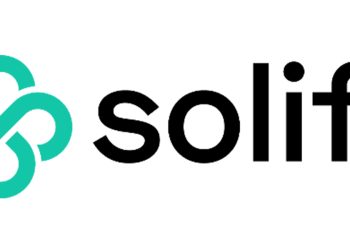Cloud-based data management can save a company money, but only when it is done right. Technologent’s Ryan Hooley, Director of Cloud and Automation, explains how important it is to focus on governance to ensure a successful transition.
(Irvine, CA) September 1, 2021— Despite the fear from many companies of how it will affect their balance sheet, the move to a cloud-based solution set is happening. It is estimated that the market worldwide for cloud-based services will increase to $50.1 billion dollars, a compounded growth of 29.4%. (1) One factor impeding the successful migration to the cloud is data silos—repositories of data managed by a single group and not easily accessible to the rest of the organization.
“Data silos affect businesses’ progress, as well as costs, which will go up when information is stored in these silos. There’s disparate information bandied about which presents security problems and reduces access to information in an expedient manner. However, the biggest impediment is that there is no governance of the data and solutions supporting the data,” says Ryan Hooley, Director of Cloud and Automation Services for Technologent.
Cloud migration is not a single technology, but rather a business strategy, especially when viewed through a FinOps lens, explains Hooley. FinOps is the practice of bringing finance, technology, and business together to manage the economics of the Cloud to gain a competitive advantage. (2) When organizations focus on the technology component of cloud migration and forget that moving to the cloud changes the dynamics of their budget, their expenditure misses the mark because it has moved from a predictable spend to a more variable and dynamic spend. When this happens, companies find budgets overwhelming and end up with the perception that the cloud is too expensive. In reality, the expense is due to the organization not holding accountability for that expenditure. Cloud should allow engineers and architects to speed the delivery of the business objectives while using FinOps to provide an operating model to introduce accountability for the expenditure which allows the company to focus on developing critical cultural shifts within financial, technical and operational control.
If a company is interested in moving to the cloud, the key to success is governance. “You have to have an understanding of why you’re going to the cloud, how you will do it, and who it will benefit,” Hooley explains. “Governance is extremely critical in your journey to the cloud to ensure you have a plan and that it matches up to your business plan and desired outcomes.” It starts with creating a cloud framework, which includes the why, how, and who, along with the financial implications for your company. As governance is defined, you begin the discovery phase to learn what applications and what systems will be put into the cloud as a cohesive workload.
From there, security must be wrapped around the workload to ensure compliance as well as enabling the data chain of custody, before moving onto the architecture of the cloud workload. At this point, FinOps comes into sharper focus, as a business will start to get an idea of the true cost. Next, is the automation phase which incorporates the time to develop IT proficiencies around processes and to determine how to build “everything as code” which will reduce costs as you grow and provide the ability to harness the speed of the cloud. Finally, there are deployment and analysis phases, where everything can be measured and monitored to look for continual opportunities for improvement. This cyclical nature of the cloud framework is a continual improvement loop and will grow as you grow.
It’s essential that businesses adopt a FinOps approach for the Cloud, or they risk financial loss and lost business opportunities. When information is in silos, work slows down, and it may take the business longer to achieve the value of that data. Ultimately, employees who aren’t aware of the strategic goals within the organization create not only security risks but financial risks due to the cloud enabling engineers, architects and developers to spend money in the cloud.
A great cloud framework presents organizations with a solution regarding data, speed, accuracy and improved service, while FinOps provides a solution for governance and accountability. Everything comes together—cloud migration, valuation of your data, enhanced security, architecture and most importantly, a way for your company to harness the power and speed of the cloud.
“FinOps is not there to save money, it’s about making money. However, companies must be aware that this is not a ‘set-it-and-forget-it scenario. The company has to be on top of it…constantly. If there is no governance, accountability or architecture, then the Cloud will be costly,” says Hooley.
About Technologent:
Technologent is a Global Provider of Edge-to-EdgeTM Information Technology Solutions and Services for Fortune 1000 companies. They help companies outpace the new digital economy by creating IT environments that are fast, flexible, efficient, transparent and secure. Without these characteristics, companies will miss the opportunity to optimally scale. Technologent mobilizes the power of technology to turn vision into reality, enabling a focus on driving innovation, increasing productivity and outperforming the market. Visit www.technologent.com.
- Businesswire newsroom; “Global Cloud Based Data Management Services Market Analysis, Trends, and Forecasts 2019-2025 – ResearchAndMarkets.com”; December 24, 2019; businesswire.com/news/home/20191224005134/en/Global-Cloud-Based-Data-Management-Services-Market-Analysis-Trends-and-Forecasts-2019-2025
- FinOps Foundation landing page; “What is FinOps”; Accessed 31 Aug 2021; finops.org/introduction/what-is-finops/




